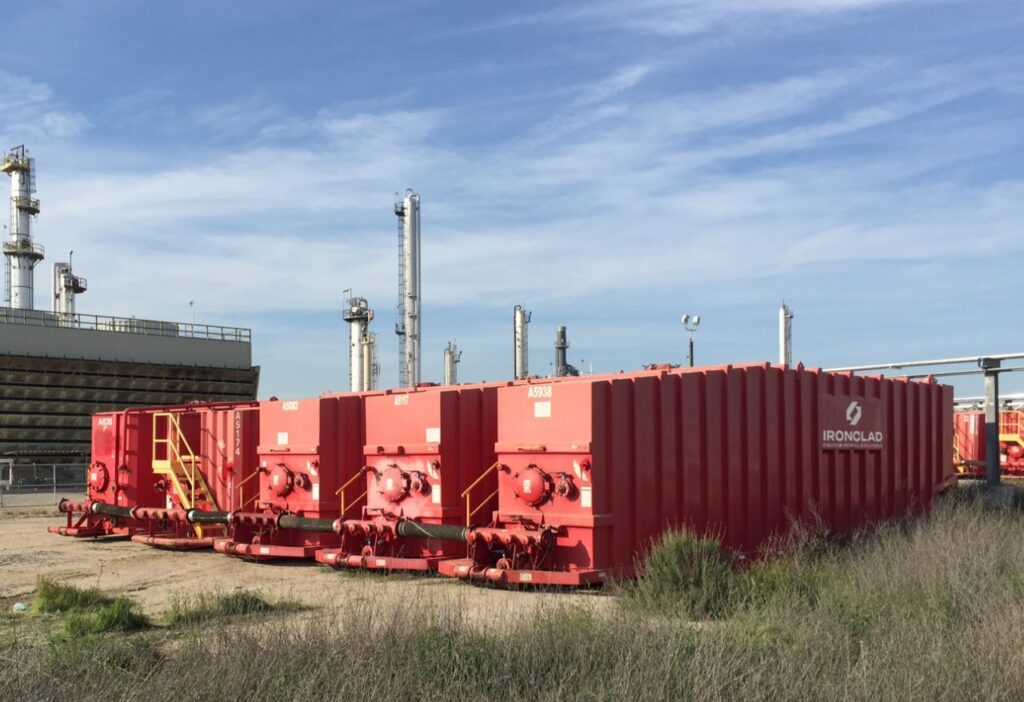Tank Strapping Chart – Crude Oil Tank Strapping
If your facility houses large crude oil storage tanks, then tank strapping charts will most certainly come in handy. When handling the tanks, you must measure the volume of the liquid at regular intervals. But the process isn’t as straightforward as it sounds. You must use special instruments and follow specific methods to obtain accurate calculations. This is where a tank strapping chart can help.
In this article, we’ll discuss the following topics:
- What a tank strapping chart does
- What else a tank strapping chart may be called
- Features
- Examples
- Reasons to own

What Is a Tank Strapping Chart?
A tank strapping chart (also known as a tank calibration chart or a strapping table) conveys the volume of liquid at important level intervals. It is an invaluable tool that allows you to easily map the level measurements to the liquid volume in non-linear tanks. A strapping chart ensures that the levels in storage tanks are always accurate.
You cannot measure the levels of liquids in a non-linear tank with simple mathematical calculations. Strapping tables help capture accurate figures. The manufacturer calibrates these tanks to ensure that each level in the tank indicates the correct volume.
The term ‘tank strapping chart’ originates from the process of calibrating the tank by measuring it with a strap or steel tape. Tank strapping is the act of calibrating and a strapping chart is the result. Modern-day instruments for tank calibration include laser levels and ultrasonic thickness gauges.
Is a Strapping Chart Different From a Calibration or Dip Chart?
No, a tank strapping chart is also known as a calibration chart or a dip chart. Other terms used to describe same tool include:
- Strapping table
- Calibration table
- Tank calibration chart
- Tank chart
- Gauge table
- Tank gauge chart
Common Strapping Chart Features
A tank strapping chart shows the height or the level measurements along with the volume of the liquid. You can convert the level measurements into gallons, liters, barrels (BBL), or any other unit. The tank chart converts a linear measurement into the volume.
There are no standard tank strapping charts. They are customized according to each tank’s specifications. To put things into perspective, 10 ft. of liquid in a small process tank has a different volume than when placed in a large terminal tank.
If the tank manufacturer does not supply a strapping chart, you can find an external professional service to make it. Modern-day level sensors have the strapping chart directly into the control system sensor. Here is a comparative study of the manual tank strapping method vs. the electro-optical distance ranging method of tank calibration.
The unit of measurement differs according to the tank and its contents. A tank strapping chart calculator may measure volume in gallons or liters and length in inches or millimeters. An oil tank may show one unit increment for every barrel (42 US gallons).
Strapping Table Examples
Below, you’ll find a sample tank strapping chart that maps each cm rise of gasoline to the equivalent volume in liters at 15 ⁰C and 0.75 kg/l density. The tank has a 46.0 m diameter and 23.0 m height and can hold liquid up to 2068.5 cm as per the design.
| CM | Liters | CM | Liters |
|---|---|---|---|
| 0 | 3,164 | 2064 | 34,272,612 |
| 1 | 6,705 | 2065 | 34,289,283 |
| 2 | 10,246 | 2066 | 34,305,953 |
| 3 | 13,787 | 2067 | 34,322,623 |
| 4 | 23,268 | 2068 | 34,339,294 |
| 5 | 32,749 | 2069 | 34,355,964 |
| … | 2070 | 34,372,634 |
How Do You Read a Tank Strapping Chart?
Reading a tank strapping chart is straightforward. The table maps each unit of the level of the liquid to the corresponding volume. By comparing level measurements with the strapping chart, technicians can find the volume of the liquid. The unit of liquid level and the volume are customized according to the needs of the tank owner.